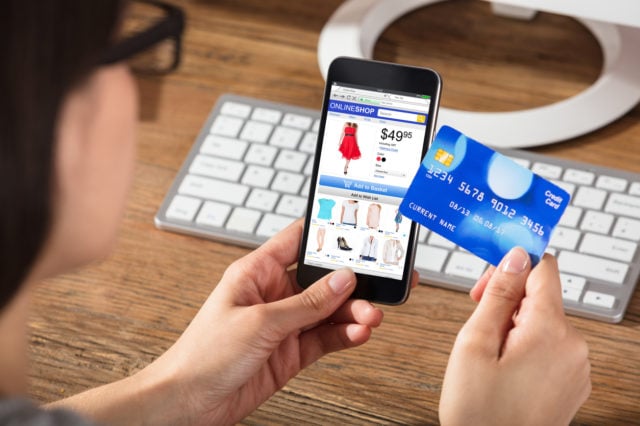Onsite abandonment is a widespread issue throughout the eCommerce industry. When a potential shopper visits your site, adds items to a shopping cart or browses the site before completing the transaction, this is considered onsite abandonment.
In the first quarter of 2018, Statista recorded that 75.6 percent of online shoppers left eCommerce sites before purchasing the items in their cart. And the issue doesn’t seem to be declining anytime soon. Over the last few years, onsite cart abandonment rates have remained in the same range, with mobile and tablet shoppers garnering even higher rates of 85.6 percent.
Why Cart Abandonment Remains an Issue for eCommerce Stores
Marketing professor Robert Soroka believes that technology itself may contribute to the problem. When consumers shop in physical stores, they are able to discuss a potential item face-to-face with a sales associate, try on or test the product and determine whether or not it’s worthy of a purchase. With eCommerce, it’s much easier for consumers to doubt the transaction. According to Content Square, eCommerce stores selling clothing are the top sites for cart abandonment, likely due to the issue of being unable to try products on first before buying.
While this inherent issue of digital shopping can’t be solved—though it may improve with the development and mainstream acceptance of virtual reality in eCommerce—there are steps you can take as a business owner to encourage your shoppers to follow through with their purchase. One of the major reasons shoppers abandon their carts is related to how the checkout process is designed. If you can create an experience that is simple, straightforward and quick, you’ll start to notice an increase in your conversion rates.

How to Decrease Your Cart Abandonment Rates
The first place to start is by examining your checkout process. How long does the page take to load? How many steps must a customer take before completing a purchase? Do you require them to submit their email address before completing the transaction? Once you’ve identified potential issues and taken steps to create a more user-friendly process, then you can begin considering additional methods to entice potential customers to return to your store.
Designing an Effective Checkout Process
It’s been proven time after time that consumers will order from an eCommerce site that settles transactions quickly. Amazon has mastered the fast checkout process, offering features like 1-Click shopping—which allows shoppers to simply order anything with the click of their mouse—and dash buttons, small devices programmed to order specific items from Amazon for quick and convenient purchases.
While it’s true that you need to build a strong sense of trust and credibility between your eCommerce site and your consumers before you can implement some of these methods, you can optimize your site to ensure the checkout process is not a burden on the shopper.
Some of the most common complaints users have had include a long or confusing checkout, mandatory account creation and uncertainty about transaction security. Allowing potential shoppers the option to create an account can help speed up the checkout process if they become returning customers, but it’s best to offer this as merely an option. Oftentimes, people are resistant to using a site that forces them to create an account. In the example below, Couture Candy provides a great example of adding a guest checkout option. Most eCommerce platforms, like BigCommerce for example, offer single page checkout options for their merchants at minimal or no cost.
Reducing the number of steps in your transaction process is another great method for creating a quick checkout and decreasing cart abandonment. Only require the minimum amount of information you need from a customer to avoid a long form and provide an option to autofill the shipping and billing address if they are the same.
Reassuring your potential shoppers that your site is trustworthy is possibly the easiest issue to solve in relation to cart abandonment.
An SSL certificate will encrypt user data after it’s submitted, and it will assure your customers that they can trust your transaction process.
A Modern-Day Solution to Cart Abandonment for eCommerce Marketers
Optimizing your shopping cart should help increase your conversions, but cart abandonment will still continue, albeit at a lower rate. Implementing a number of additional strategies and utilizing eCommerce marketing services can help vastly increase your conversion rates. Springbot can assist your eCommerce business by running personalized marketing campaigns, targeting your user’s interests and re-engage shoppers with AdRoll, triggered emails, social media campaigns and more.
Using Springbot’s onsite abandonment tools, your eCommerce site will see a huge improvement in customer conversion and decreased checkout abandonment rates. Targeting shoppers who are not purchasing from your store is an excellent way to turn site traffic into financial gains and allows you the opportunity to provide consumers with a more personalized shopping experience.
Re-Engage with Potential Shoppers
Using a number of other strategies, you can still decrease onsite abandonment rates by reaching out to users who did not purchase from your eCommerce store. A common tactic is to send a follow-up email to any consumer who abandoned their cart and offer a special discount, free shipping or some other enticing offer. Providing the potential buyer with an incentive is an effective way to turn site visits into revenue.

Personalized Shopping Experience
Recording a user’s online shopping behavior and interests is commonplace for many eCommerce marketing campaigns today. Having the capability to show your consumers items similar to products they have viewed or expressed interest in boosts the chance that they will engage with your site again. Instagram ads are a typical method for targeted campaigns, which exposes your brand to a new audience and attracts specific types of consumers.
Though Instagram ads are an effective example of a personalized shopping experience, you can provide this across a number of platforms including other social media channels like Facebook. Suggesting items similar to ones shoppers have added to their cart and abandoned can re-engage them with your products.
Retargeting With AdRoll
What is AdRoll?
Dubbed as a “growth platform,” AdRoll is a service designed to expand your business’s exposure. One of the most effective methods for turning passive customers into returning buyers, retargeting campaigns are one of AdRoll’s most utilized services. With Springbot, we can help track your users’ interests and behavior. Then, we’ll run a retargeting campaign with AdRoll to reach out to those passive customers and entice them back to your store.
What Does a Retargeting Campaign Do?
The goal of a retargeting campaign is to identify those who have added to your cart abandonment rate and use the specific actions they took on your site to convert them into buyers. With Springbot’s analytical services, we help classify types of consumers who are using your site, which informs you of specific demographics that your products are appealing to and then using that information to directly attract people who have viewed your site.
When you choose to enable a retargeting campaign with AdRoll, shoppers who have abandoned their carts will start to see online, social media and mobile ads for your site and for specific products they added to their carts. Through Springbot, you’ll be able to track these campaigns and assess the effectiveness.
Automated Triggered Emails
If a potential buyer has left your site without checking out, you can enable automated triggered emails to remind that user of your products and services. This email strategy will send consumers an additional incentive to make a purchase from your eCommerce store.
The most common way to do this is by offering a discount, even something as small as 15-20 percent off their first purchase. Research shows that consumers are more likely to complete a transaction if they feel that they are getting some type of deal.
Another common tactic that can be used to re-engage shoppers through email is to include free shipping or offer a special add-on product for free. Providing users with these perks makes them feel special and often convinces them to return to the site as a customer. The initial purchase is extremely important because if the consumer is impressed by your products and your process (transaction time, shipping, prices, etc.), then they are more likely to convert into a regular buyer.
Personalize Your Message with Springbot Exchange
It’s become clear that targeting specific buyers and including personalized information is a vital aspect of converting them into customers. When you use our Springbot Exchange feature, you have the option to send one blanket email to everyone who uses your eCommerce site, or you can choose to set up different email responses for specific demographics. With our analytical tools, we’ll create customer profiles for the users on your site and design emails that appeal to them individually.
Springbot takes into account how each of these consumers engages with your brand, including which product pages they have viewed on your site, which items they added to their cart before abandoning, how many times they visited a product page, how long they spent on certain pages and more.

Addressing Mobile Shopping Cart Abandonment
To truly combat the issue of cart abandonment, you must think beyond desktop shoppers and consider how people make purchases on their mobile phones. According to Invesp, mobile eCommerce for 2017 was roughly $2 billion, an increase of $1.6 billion since 2014.
Though desktop and laptop users certainly make up the majority of eCommerce shoppers, mobile is clearly gaining traction. In 2018, recent studies report that 38 percent of online consumers use mobile as their primary purchasing resource.
Without considering how mobile users are engaging with your site, you’re ignoring a major outlet for possible conversions. The most important step you can take to increase your mobile shoppers is to ensure that your site has been optimized for mobile use.
Too often eCommerce sites work flawlessly on a desktop computer, but when a user tries to engage with the site on their smartphone, they run into roadblocks. Common issues include a slow load time, a lengthy checkout process or a site that hasn’t been optimized for mobile screens.
Cart abandonment rates may be high for computer use, but mobile shopping has the highest rate with more than 85 percent of shoppers leaving items in their mobile carts. Once you’ve optimized your site for mobile use, you must overcome this tendency for consumers to leave their transactions incomplete.
Increasing the shopping cart loading speed can be helpful as well as designing the mobile version of the cart to be simple and straightforward. Make sure to display all the necessary information consumers want to see about a product, including a photo and inventory levels.
While it’s clear why the checkout process in general needs to be quick, it’s even more important for mobile shopping. Mobile shoppers can become easily distracted between calls, text messages, push notifications from apps, among other features. Don’t allow your potential buyers enough time to lose interest in your site. Instead, make the checkout one or two steps long to increase conversions. Since mobile shoppers often view products while on the go, you should also consider offering a range of payment methods, including PayPal and Apple Pay.
Conclusion
By implementing a few key strategies, you can free your online business from the plague of cart abandonment. Successful eCommerce stores streamline their checkout processes and use innovative marketing practices to increase engagement and trust with their consumers.
Want to learn more about decreasing your cart abandonment rates? Request a demo from Springbot and learn more about how our services can start increasing your conversions today.






